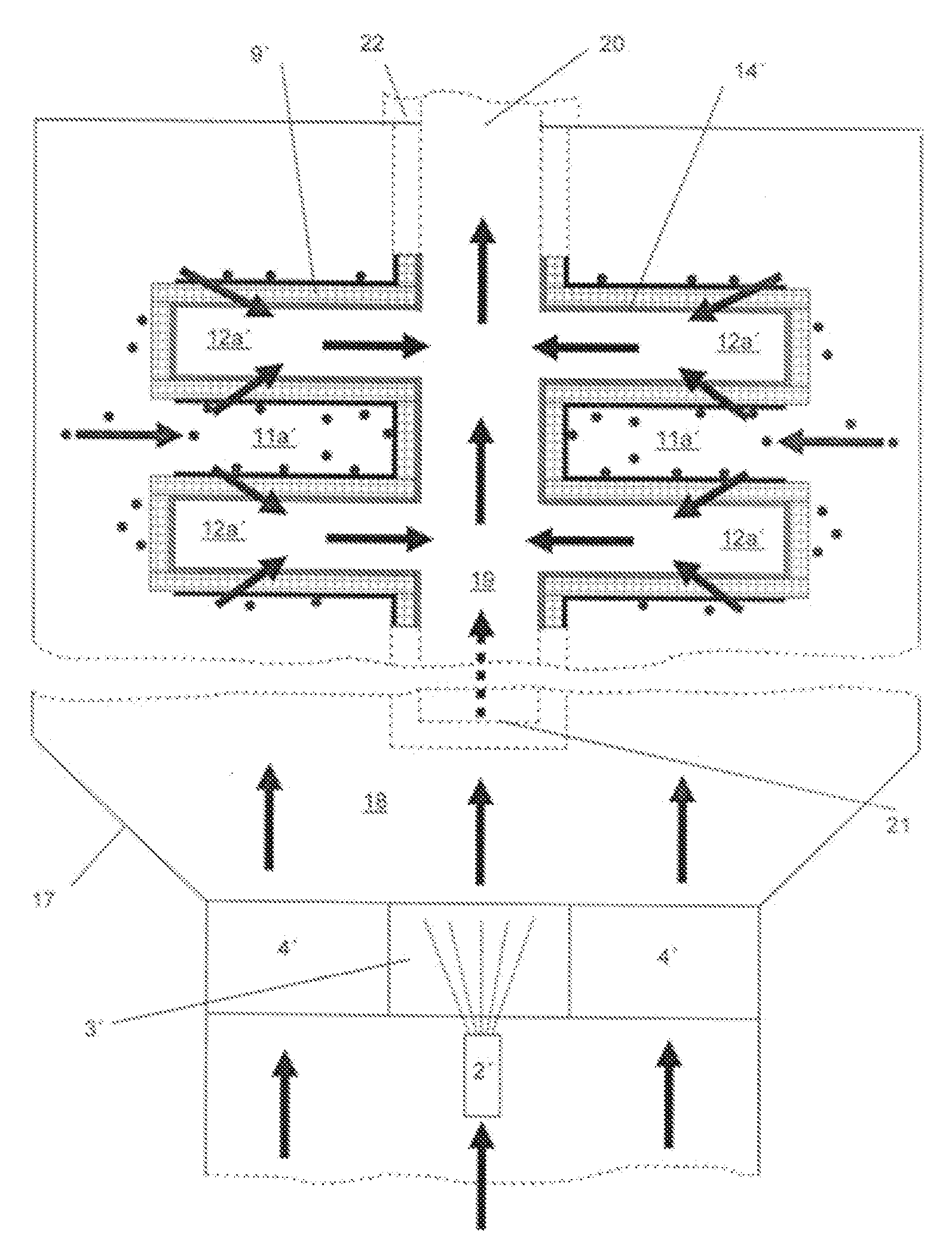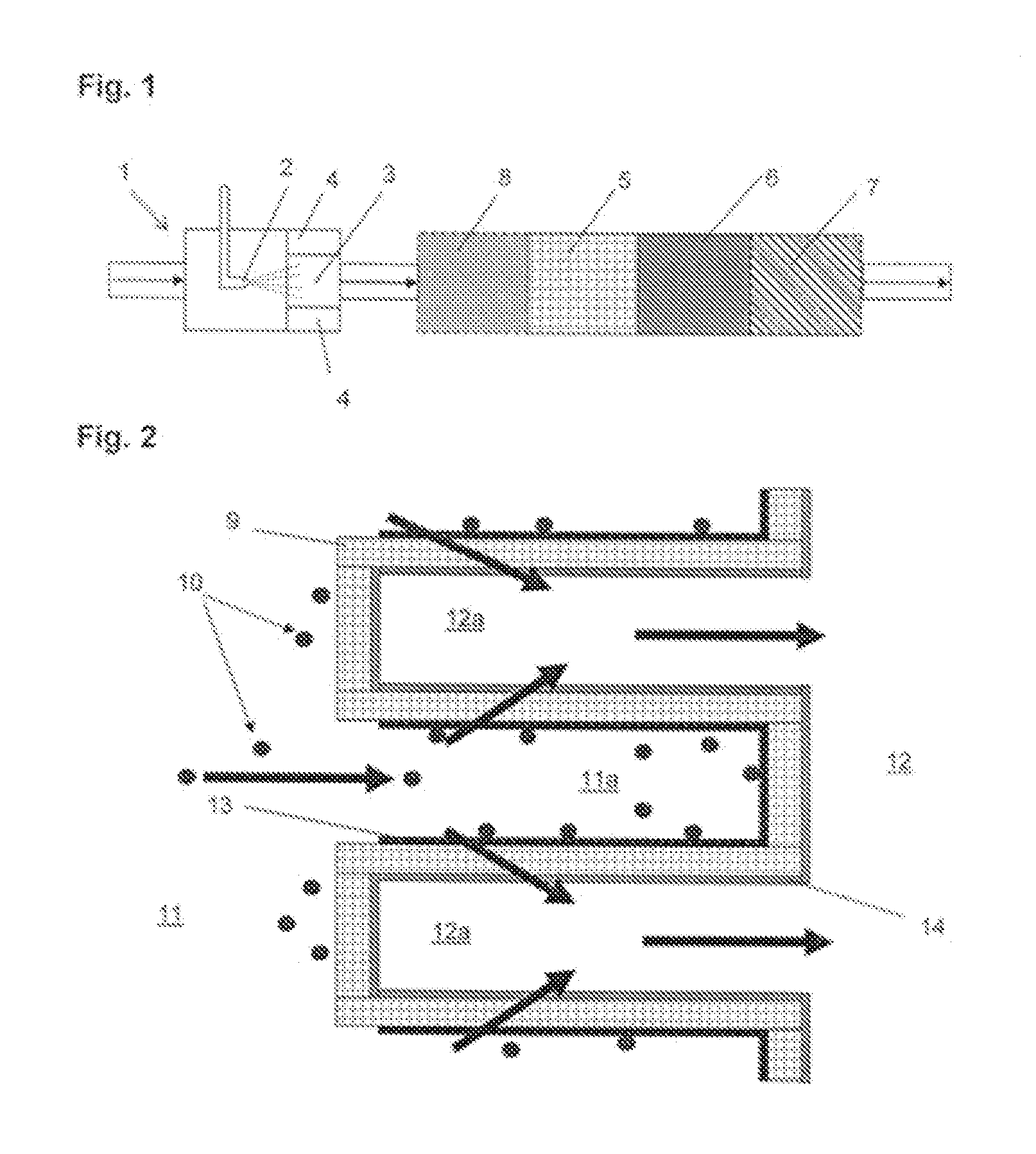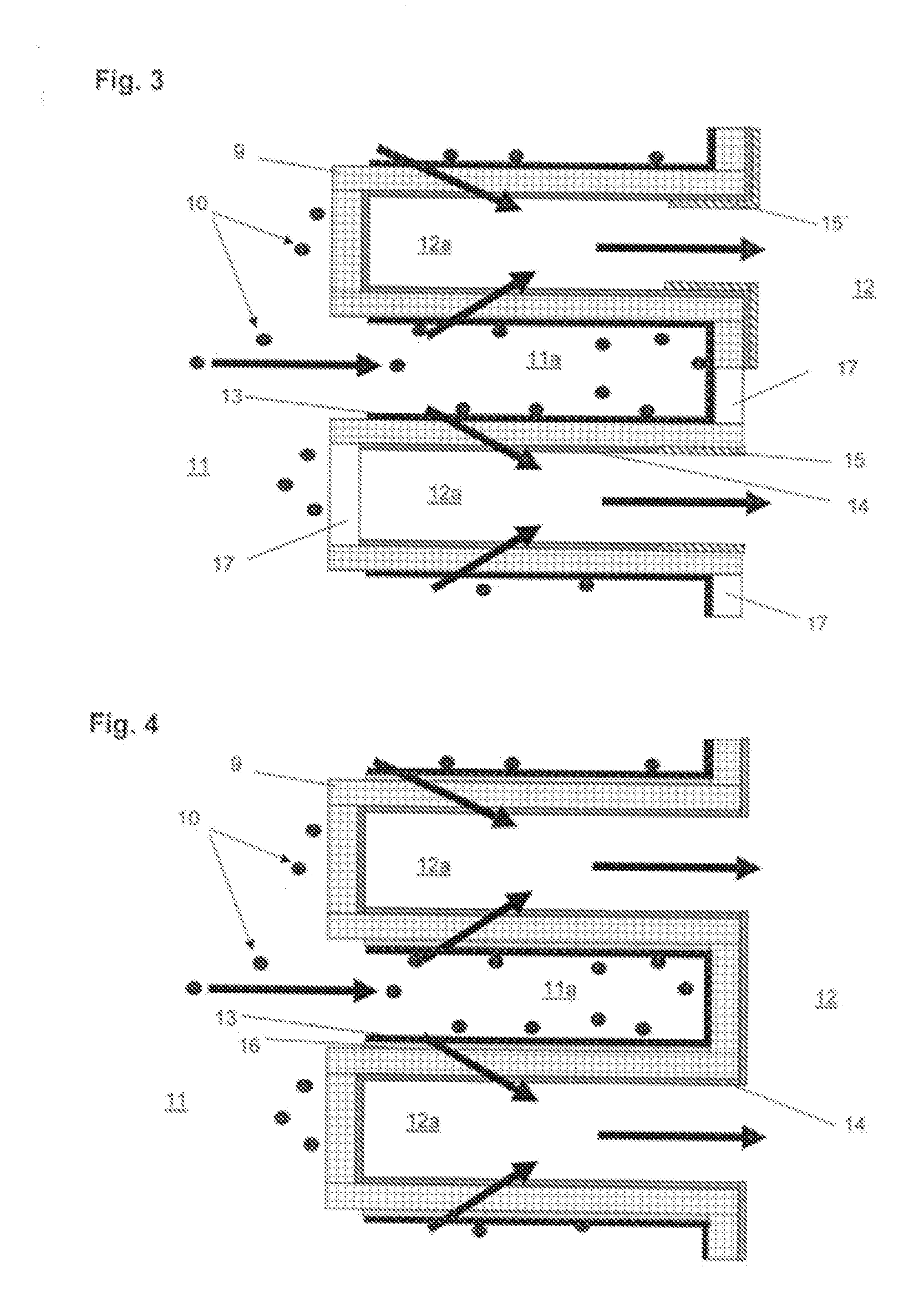Exhaust gas post treatment system
a post-treatment system and exhaust gas technology, applied in the direction of physical/chemical process catalysts, separation processes, filtration separation, etc., can solve the problems of nitrogen oxide reduction, difficult quantitative measurement of reduction agents, and use of scr catalyst active material vsub>2/sub>o/sub>5/sub>, so as to reduce engine power, reduce the effect of very fine particles and increase the counter pressure of exhaust gas
- Summary
- Abstract
- Description
- Claims
- Application Information
AI Technical Summary
Benefits of technology
Problems solved by technology
Method used
Image
Examples
Embodiment Construction
[0031]Referring now to the drawings in detail, an exhaust gas post treatment system for the selective catalytic reduction and for the reduction of solid particles in the exhaust gas of an internal combustion engine is schematically illustrated in FIG. 1. The exhaust gases, which are produced from an internal combustion engine (not illustrated) by the combustion processes, and which are symbolized by the arrows in FIG. 1, first pass into an exhaust gas preparation section 1, in which a reduction agent is added to the hot exhaust gas as close to the engine as possible. As is common with motor vehicles having SCR catalytic converters, the reduction agent is an aqueous urea solution; it is, of course, also conceivable to add urea in solid form, as this is already described in detail in the pertinent technical literature. It is furthermore possible to add ammonia as the reduction agent which is recovered at some other location, for example under more favorable thermal conditions, from a ...
PUM
| Property | Measurement | Unit |
|---|---|---|
| Flow rate | aaaaa | aaaaa |
Abstract
Description
Claims
Application Information
 Login to View More
Login to View More - R&D
- Intellectual Property
- Life Sciences
- Materials
- Tech Scout
- Unparalleled Data Quality
- Higher Quality Content
- 60% Fewer Hallucinations
Browse by: Latest US Patents, China's latest patents, Technical Efficacy Thesaurus, Application Domain, Technology Topic, Popular Technical Reports.
© 2025 PatSnap. All rights reserved.Legal|Privacy policy|Modern Slavery Act Transparency Statement|Sitemap|About US| Contact US: help@patsnap.com



